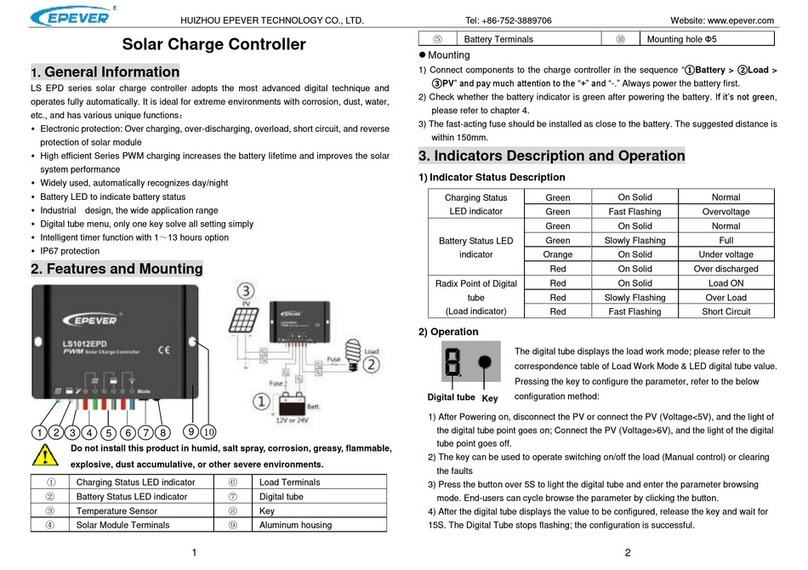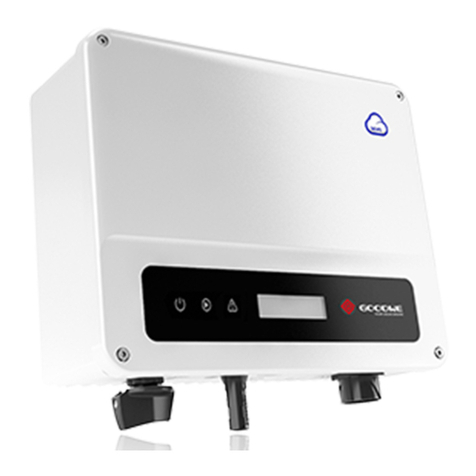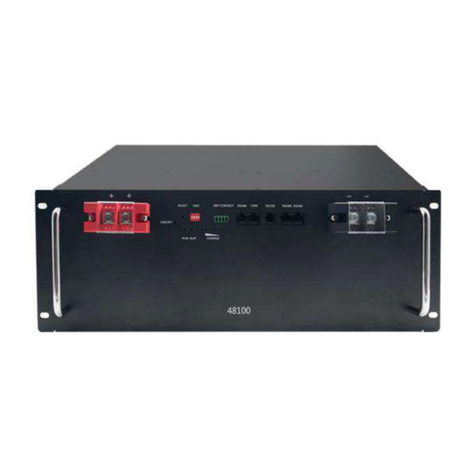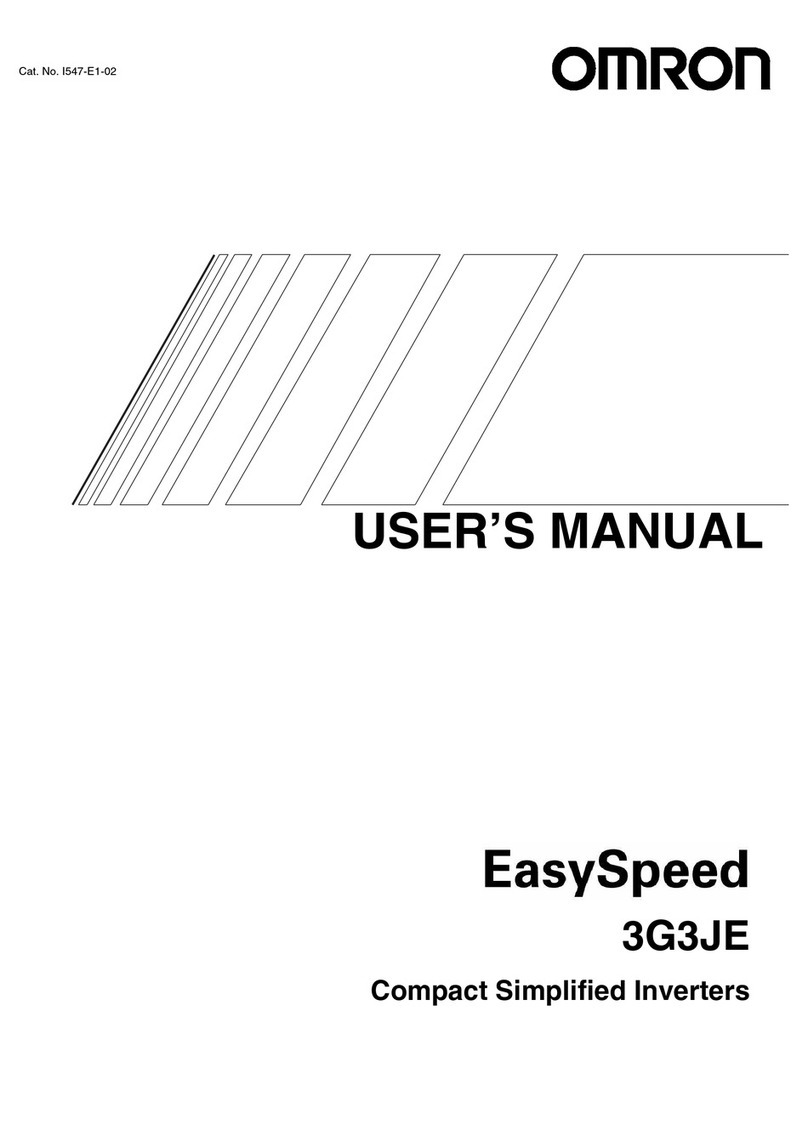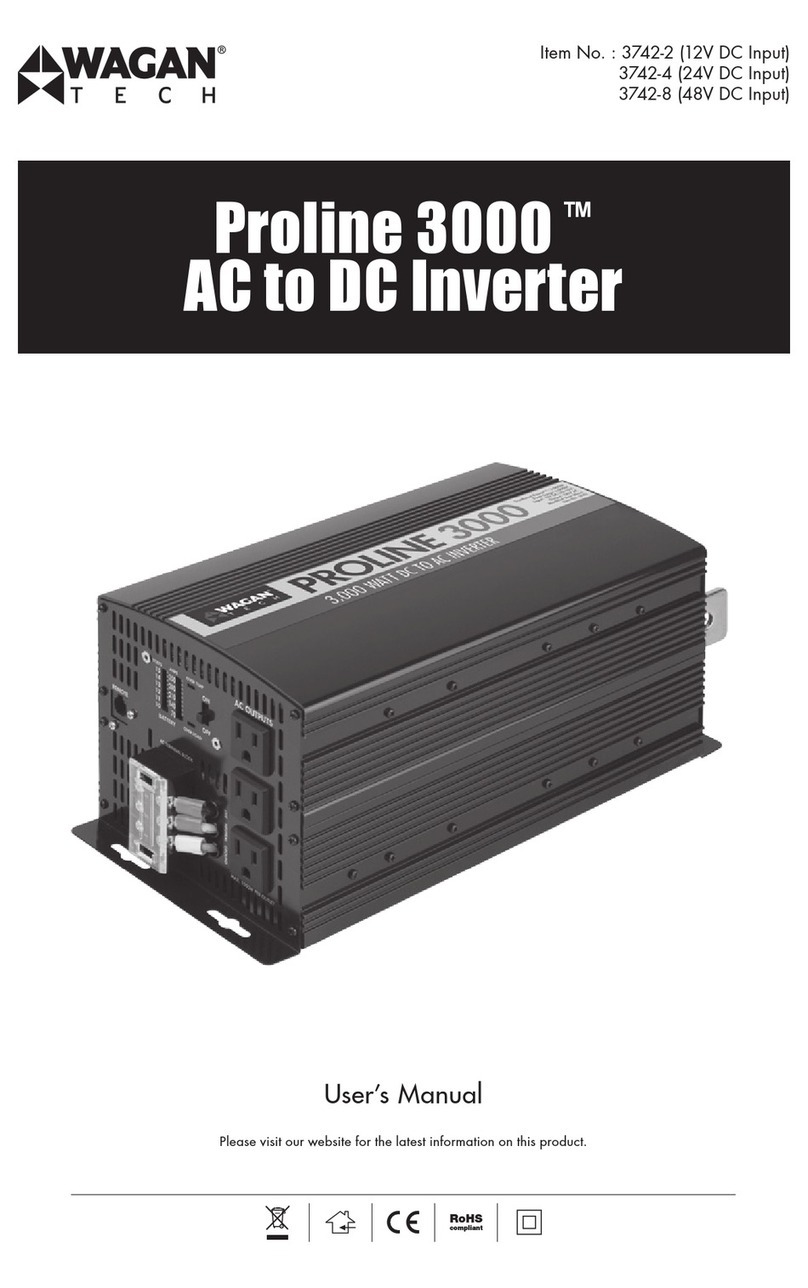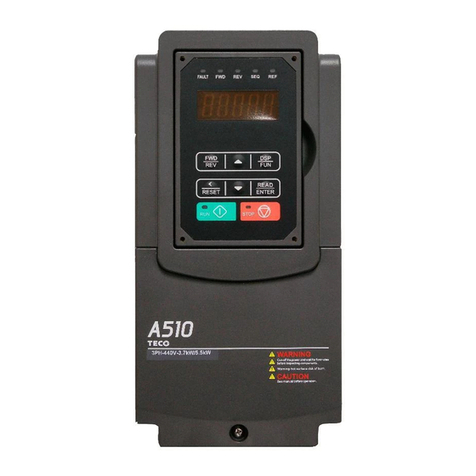FTE Maximal SUN600G3-EU230 Instruction Manual

Installation / User Manual
Version:1.0
03/04/2023
Photovoltaic Grid-connected
Microinverter (Built-in WIFI-G3)

Important Safety
Instructions
01-
03
Safety
Instructions
Radio Interference Statement
The Meaning of Symbols
Microinverter System Introduction 03-
05
Microinverters Maximize PV Energy
Production
More Reliable than Centralized or
String Inverters
Simple to Install
Microinverter Introduction 05
Microinverter System Installation 06-
10
Additional Installation
Components Required Parts
and Tools from You Parts list
Installation Procedures
Microinverter System Operating Instructions 10-
11
Troubleshooting 11-
13
Status Indications and Error Reporting
Troubleshooting a Non-operating
Microinverter
Replacement 14
Technical Data 14-
15
600/800/1000G3 Microinverter Datasheet
Wiring
Diagram
16-
17
Monitoring Platform 18
How
to
Configure
the
Microinverter
to
the
Router
Via
Web
How to connect in APP
19-
22
23-
27
Table of Contents

- 01 -
Important Safety Instructions
This manual contains important instructions to follow during installation and
maintenance
of the Photovoltaic Grid-connected
Inverter(Microinverter).To reduce the risk of
electrical shock and ensure the
safe installation and operation of the Microinverter, the following symbols
appear throughout this document to indicate dangerous conditions
and important safety instructions.
Specifications subject to change without notice - please ensure you are using the
latest manual found at the manufacturer website.
WARNING: This indicates a situation where failure to follow instructions may
cause a
serious hardware failure or personnel danger if not applied
appropriately. Use extreme
caution when performing this task.
NOTE
: This indicates information that is important for optimized
microinverter
operation. Follow these instructions strictly.
SafetyInstructions
Only qualified professionals should install and/or replace the
Microinverters. Perform all electrical installations in accordance
with local electrical codes.
Before installing or using the Microinverter, please read all instructions and
cautionary markings in the technical documents and on the Microinverter
system and the
solar-
array.
Be aware that the body of the Microinverter is the heat sink and can reach a
temperature
of 80℃. To reduce risk of burns,do not touch the body of the
Microinverter.
DO NOT attempt to repair the Microinverter. If it fails, contact technical support
to obtain an
RMA
number and start the replacement process. Damaging or
opening the Microinverter will void the warranty.
Caution!
The external protective earthing conductor is connected to the inverter
protective
earthing terminal through AC connector.
When disconnecting, disconnect the AC by opening the branch circuit breaker
first

-
02
-
but maintain the protective earthing conductor in the branch circuit breaker
connect
to the inverter ,then disconnect the
DC
inputs.
Please install isolation switching devices on the AC side of the inverter.
Radio Interference Statement
CE EMC
Compliance
:
The equipment can comply with
CE EMC,
which
are designed to protect against harmful interference in a residential
installation. The equipment could radiate radio frequency energy and this
might cause harmful interference to radio communications if not following
the instructions when installing and using the equip- ment. But there is no
guarantee that interference will not occur in a particular installation.
If this
equipment causes harmful interference to radio or television reception,the
following
measures might resolve the issues:
B)
Consult the dealer or an experienced radio / TV technical for help.
Changes or modifications not expressly approved by the party responsible for
compliance may void the user's authority to operate the equipment.
The Meaning of Symbols
Can be OEM
Trademark.
Caution, risk of electric shock.
Caution, risk of burn - Do not touch.
Caution, hot surface.
Symbol for the marking of electrical and electronics devices
according to Directive 2002/96/EC. Indicates that the device,
accessories and the packaging must not be disposed as unsorted
municipal waste and must be collected separately at the end of
the usage. Please follow Local Ordinances or Regulations for
disposal or contact an authorized representative of the
manufacturer for information concerning the
decommissioning of equipment.

- 03 -
Meter
Distribution
Box
Microinverter
WIFI
Boost
Neutral
Ground
Router
Monitoring
system
PV
Module
CE
mark is attached to the solar inverter to verify that the unit
follows the provisions of the European Low Voltage and
EMC
Directives.
Refer to the operating instructions.
Person adequately advised or supervised by an electrically
skilled person to enable him or her to perceive risks and to
avoid hazards which electricity can create. For the purpose of
the safety information of this
Qualified
manual, a "qualified person" is someone who is familiar with
personnel
requirements for safety, refrigeration system and
EMC
and is
authorized to energize,ground, and tag equipment, systems,
and circuits in accordance with established safety procedures.
The inverter and endues system may only be commissioned and
operated by qualified personnel.
Microinverter System Introduction
The Microinverter is used in utility-interactive grid-tied applications,
comprised of two key elements:
·
Microinverter
·
Router
This series microinverter has built-in WIFI module so it can communicate with
router
directly.
600
/
800
/
1000G3

- 04 -
NOTE
: If the wireless signal in the area where the microinverter is weak is
weak, it is necessary to add a wifi signal booster at a suitable place
between the router and the microinverter.
This integrated system improves safety; maximizes solar energy harvest;increases
system reliability, and simplifies solar system design, installation,maintenance,
and management.
Microinverters Maximize PV Energy Production
Each PV module has individual Maximum Peak Power Tracking (MPPT)
controls, which ensures that the maximum power is exported to the utility grid
regardless of the performance of the other PV modules in the array.When PV
modules in the array are affected by shade, dust, orientation,or any situation
in which one module underperforms compared with the other units, the
Microinverter ensures top performance from the array by maximizing the
performance of each module within the array.
More Reliable than Centralized or String Inverters
The distributed Microinverter system ensures that no single point of system
failure exists
across the PV system.Microinverters are designed to operate at
full power at ambient outdoor temperatures of up to 149℉ (65℃). The inverter
housing is designed for outdoor installation and complies with the IP65
environmental enclosure rating.

- 05 -
Simple to Install
You can install individual PV modules in any combination of Module
quantity, orientation, different type and power rate The Ground wire (PE) of the
AC cable is connected to the chassis inside of the Microinverter,potentially
eliminating the installation of grounding wire (check local regulation).
Data collection adopts internal wifi,wireless router is needed near the
microinverter.When
complete the installation of microinverter,configure
wireless router with internal wifi(refer
to the wifi user manual).The data will
be uploaded automatically.Users can monitor and manage the microinverter
through corresponding website or APP.
Microinverter
Introduction
The Microinverters connect with the single-phase grid, and can also use
multiple Micro- inverters in the form of single-phase grid to achieve three-
phase grid.
For more information, please see the Technical Data page (P15) of this manual.
Model
Number
AC
grid
Max. #
Per branch
SUN600G3-EU-
230
50/60Hz,
230V
8 for 25A breaker
SUN800G3-EU-
230
50/60Hz,
230V
6 for 25A breaker
SUN1000G3-EU
-
230
50/60Hz,
230V
5 for 25A breaker

- 06 -
Microinverter System Installation
A PV system using Microinverters is simple to install. Each Microinverter
easily mounts on the PV racking, directly beneath the PV module(s). Low
voltage DC wires connect
from the PV module directly to the
Microinverter, eliminating the risk of high DC voltage.Installation
MUST comply with local regulations and technical rules.
Special Statement! An AC GFCI device should not be used to protect the
dedicated circuit to the microinverter even though it is an outside circuit. None
of the small GFCI devices (5~30mA) are designed for back feeding and will be
damaged if back feed. In a similar manner, AC AFCIs have not been evaluated
for back feeding and may be damaged if back
feed with the output of a PV
inverter.
WARNING:
Perform all electrical installations in accordance with local electrical
codes.
WARNING:
Be aware that only qualified professionals should install and/or replace
Microinverters.
WARNING:
Before installing or using an Microinverter,please read all
instructions and
warnings in the technical documents and on the
Microinverter system itself as well as on the PV array.
WARNING:
Be aware that installation of this equipment includes the risk of
electric
shock.
NOTE
: Strongly recommend to install Surge protection Devices in the
dedicated meter
box.
Additional Installation components
·
AC Male and Female Interconnection Connectors (sold separately)
·
Sealing end caps(sold separately)
Required Parts and Tools from you
In addition to your PV array and its associated hardware, you will need the
following
items:
·
An AC connection junction box
·
Mounting hardware suitable for module racking
·
Sockets and wrenches for mounting hardware
·
Continuous grounding conductor and grounding washers
·
A Phillips screwdriver
·
A torque wrench

- 07 -
Microinverter x1
User manual x1
User
manual
AC power connectors
(op�onal)
x1
*AntennaforWIFI
module x1
Parts
list
Please
check
the
following
table,
to
see
whether
all
the
parts
are
included
in
the
package
:
* This antenna is for microinverter that has built-in wifi module.
Installation Procedures
Step1-lnstalltheAC branchcircuit junctionbox
a.
Install an appropriate junction box at a suitable location on the PV
racking system (typically at the end of a branch of modules).
b.
Connect the open wire end of the AC cable into the junction box using an
appropriate gland or strain relief fitting.

- 08 -
c.
Wire the conductors of the AC(230/400Vac): L - red; N - black ;PE - yellow green.
d.
Connect the AC branch circuit junction box to the point of utility Interconnection.
WARNING
: Wiring colour code can be different according local
regulation,check all the wires of the installation before connecting to the AC
cable to be sure they match.
Wrong cabling can damage irreparably the
microinverters,such an issue is not covered
by the warranty.
Step 2 - Attach the Microinverters to the racking or the PV module frame
a.
Mark the location of the Microinverter on the rack, with respect to the
PV module junction box or any other obstructions.
b.
Mount one Microinverter at each of these locations using hardware
recommended by your module racking vendor.
600 / 800 / 1000G3 (2MPPT)
Mounting
The AC wire on the micro inverter is a TC-ER wire with a wire cross-section
area of
3.33mm
²
.
AC cable L=120mm
3.33mm²

- 09 -
WARNING
: Prior to installing any of the microinverters, verify that the utility
voltage at the point of common connection matches the voltage rating on
microinverter label.
WARNING
: Do not place the inverters (including
DC
and
AC
connectors)
where exposed to the sun, rain or snow, even gap between modules. Allow a
minimum of 3/4
(1.5cm.) between the roof and the bottom of the Microinverter
to allow proper air flow.
Step 3- Connect the microinverters in parallel
600/800/1000G3
(2MPPT)
connect in parallel
a.
Check the Microinverter technical data page 5 for the maximum allowable
number of Microinverters on each AC branch circuit.
b.
Plug the male AC connector of the Microinverter into the female connector
to get it connected.AC connector interface as follows.
PE
L
N
WARNING
: DO NOT exceed maximum number of Microinverters in an AC
branch circuit, as displayed on the page 5 of this manual.

- 10 -
Step
4
-
lnstall
an
AC
cable
protective
end
cap
at
the
end
of
AC
cable
Step
5
-
Connect
Microinverter
to
the
PV
Modules
NOTE
: When plugging in the
DC
cables, if
AC
already available,the
Microinverter should
immediately blink red light and will start work within the
setting time (default 60 seconds).
If
AC
is not available, the red light will blink
3 times quickly and repeat after one second until
AC
is connected.
Microinverter System Operating Instructions
To operate themicroinverter PVsystem:
1.
Turn ON the AC circuit breaker on each microinverter AC branch circuit.
2.
Turn ON the main utility-grid AC circuit breaker. Your system will
start producing
power after a one-minute waiting time.

- 11 -
3.
The units should start blinking red one minutes after turning on the AC
circuit breaker. Then blue led blinking. This means they are producing
power normally, the faster blinking of the blue led means more power
generated.
4.
Configure the internal wifi module according to its user manual.
5.
The Microinverters will start to send performance data over wifi module to
the network
every 5 minutes.It enables customers to monitor performance data
of each microinverter
through website and APP.
NOTE
: When AC power is applied but the microinverter not started up, about 0.1A
current
and 25VA(W) power for each microinverter may be measured by a
power meter. This power is reactive power,not consume from utility grid.
Troubleshooting
Qualified personnel can use the following troubleshooting steps if the PV
system does
not operate correctly:
Status Indications and Error Reporting
One minute after DC power is first applied to the
microinverter,one
short red blinks indicate a successful
microinverter startup sequence,
be equal or greater than two
short red blinks after DC power is first applied to the
microinverter indicate a failure during microinverter
setup.
Flashing Slow Blue
- Producing small
power Flashing Fast Blue
-
Producing big power Flashing Red
- Not producing power
Red blinking two times - AC low-voltage or high-
voltage Red blinking three times - Grid failure

- 12 -
A four time red LED indicates the Microinverter has
detected a
Ground Fault Detector Interrupter (GFDI) error
in the PV system.
Unless the GFDI error has been cleared,
the LED will remain four times blinking.
All other faults can be reported to the website and APP.
WARNING
: Never disconnect the DC wire connectors under load. Ensure that
no
current is flowing in the DC wires prior to disconnecting. An
opaque covering may be used to cover the module prior to
disconnecting the
module.
Troubleshooting a non-operating Microinverter
There are two possible overall areas of trouble:
A.
The Microinverter itself may be having problems.
B.
The Microinverter itself is working fine but the communication
between microinverter and network has problem. The items below refer to
Microinverter issues, not communicat
-ion issues:
One quick way to tell whether the issue is the Microinverter or the communication
problem:
1.
Diagnosing from the Microinverter: A red light–either blinking or
solid on the Microinverter, or no light at all means it is definitely the
Microinverter problem.
2.
0 watts, or 2 watts: Possibly a Microinverter problem

- 13 -
2.
Diagnosing from the network:
a.
No-Data-Display: The website and APP don't display any data.Check
the network
configuration.
b.
Only display microinverter is online but no data.This maybe
because server is updating.
To troubleshoot a non-operating Microinverter, Follow the steps
below in
or
der
:
1.
Verify the utility voltage and frequency are within ranges shown in the
Technical Data
section of this manual.
2.
Check the connection to the utility grid.Disconnect AC firstly,then
disconnect DC and make sure the utility grid voltage can be measured at AC
connector. Never disconnect the DC wires while the microinverter is
producing power. Re-connect the DC module connectors and watch for
three short LED flashes.
3.
Check the AC branch circuit interconnection between all the
microinverters. Verify each inverter is energized by the utility grid as
described in the previous step.
4.
Make sure that any AC breaker are functioning properly and are closed.
5.
Check the DC connections between the microinverter and the PV module.
6.
Verify the PV module DC voltage is within the allowable range shown in
the Technical
Data of this manual.
7.
If the problem still persists, please contact technical support.
WARNING
: Do not attempt to repair the microinverter.If troubleshooting
methods fail,
please call for Technical Support

- 14 -
Replacement
Follow the procedure to replace a failed Microinverter
A.
Disconnect the Microinverter from the PV Module, in the order shown
below:
1.
Disconnect the AC by turning off the branch circuit breaker.
2.
Disconnect the AC connector of the microinverter.
3.
Cover the module with an opaque cover.
4.
Disconnect the PV module DC wire connectors from the Microinverter.
5.
Remove the Microinverter from the PV array racking.
B.
Install a replaced Microinverter to the bracket then remove the
opaque cover. Remember to observe the flashing
LED
light as soon as
the new Microinverter is plugged into the
DC
cables.
C.
Connect the AC cable of the replacement Microinverter.
Technical Data
WARNING
: Be sure to verify the voltage and current specifications of your PV
module
match with those of the Microinverter. Please refer to the datasheet or
user manual.
WARNING
: You must match the DC operating voltage range of the PV
module with
the allowable input voltage range of the Microinverter.
WARNING
: The maximum open circuit voltage of the PV module must not
exceed
the specified maximum input voltage of the inverter.

- 15 -
600G3/800G3/1000G3 Microinverter Datasheet
Model
Input Data (DC)
Recommended input power(STC)
Maximum input DC voltage 60V
25~55VMPPT Voltage Range
33V-55V 40V-55V30V-55V
MPPT Full Power Voltage Range(V)
SUN800G3-
EU-230
210-500W(2 Piece)
SUN600G3-
EU-230
210-420W(2 Piece)
SUN1000G3-
EU-230
210-600W(2 Piece)
Output Data (AC)
20V
19.5Ax2
13Ax2
Min.DC input voltage(V)
Max DC short circuit current
Max input current
Rated output Power 800W
600W 1000W
Max.AC Output Power 800W
600W 1000W
Max.AC Output Current(A) 3.6/3.5A
2.7/2.6A 4.5/4.4A
Rated output Current 3.6/3.5A
2.7/2.6A 4.5/4.4A
220V/0.85Un-1.1Un 230V/ 0.85Un-1.1Un
50/60Hz
1
Nominal voltage / range
Nominal frequency
Extended frequency / range
Power factor
Maximum unit per branch
<4000m
0A
10A
6
85
Max. allowed altitude operating
Max.inverter backfeed
current to the array
Max output fault current
45~55Hz / 55~65Hz
Efficiency
Mechanical Data
95%
96.5%
99%
50mW
CEC weighted efficiency
Peak inverter efficiency
Static MPPT efficiency
Night time power consumption
Ambient temperature range
Dimensions(W×H×D mm)
Weight (kg)
Cooling
Enclosure environmental rating
-40 ℃ ~ 65 ℃
IP67
Class I
Natural cooling
10 Years
Features
Protective class
Compatibility
Communication
Compliance
Warranty
Compatible with 60,72 cell PV modules
WiFi / Zigbee
EN50549,VDE0126,VDE4105,IEC62109,CE,INMETRO
212W×230H×40D (Without mounting bracket and cable)
3.15

- 16 -
600/800/1000G3 (2MPPT)
MAX 8 SUN600G3-EU-230 per Branch
MAX 6 SUN800G3-EU-230 per Branch
MAX 5 SUN1000G3-EU-230 per Branch
:LULQJ'LDJUDP
meter
GROUND
JUNCTION
BOX
BLACK N
RED L
YELLOW PE
Router Monitoring system
WIFI Boost

- 17-
600/800/1000G3 (2MPPT)
MAX 8 SUN600G3-EU-230 per Branch
MAX 6 SUN800G3-EU-230 per Branch
MAX 5 SUN1000G3-EU-230 per Branch
BLACK N
RED L
YELLOW PE
meter
GROUND
JUNCTION
BOX
Router Monitoring system
WIFI Boost

- 18 -
Monitoring Platform
This series microinverter has built-in WIFI modular which is able to connect
router directly. For WIFI configuration, please check the manual of“Built-
in WIFI modular microinverter WIFI configuration Manual”
Web monitoring address:
https://pro.solarmanpv.com
(for installer or dealer accounts)
https://home.solarmanpv.com (for end user account)
For mobile phone monitoring system, scan the QR code to download the APP.
Also you can find it by searching “solarman business” in App store or Google
Play store,
and this App is for distributor/installer.
Find it by searching “solarman smart” in App store or Google Play store and
choose
“solarman smart”, this app is for plant owner.
SOLARMAN Smart
for end user account
SOLARMAN Business
for distributor or
installer account
This manual suits for next models
2
Table of contents
Popular Inverter manuals by other brands
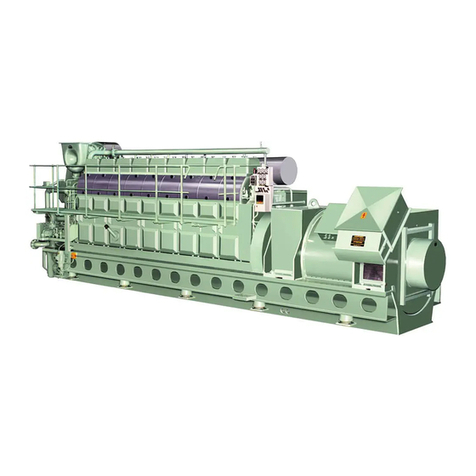
MAN Diesel & Turbo
MAN Diesel & Turbo L28/32H instruction manual
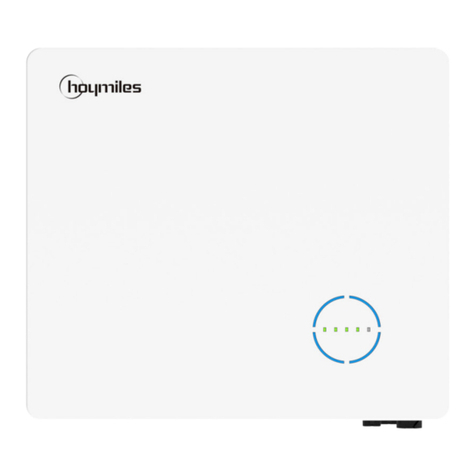
Hoymiles
Hoymiles HA S-3.0LV-EUG1 Quick installation guide
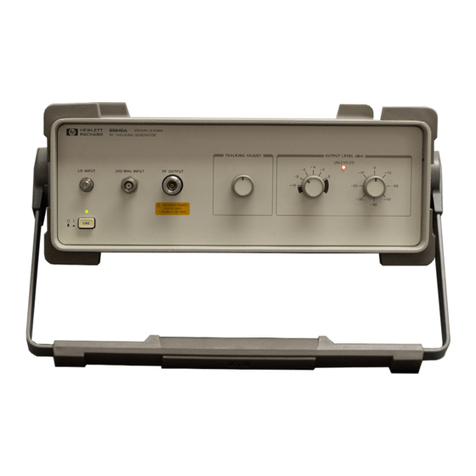
HP
HP 85640A Operating and service manual
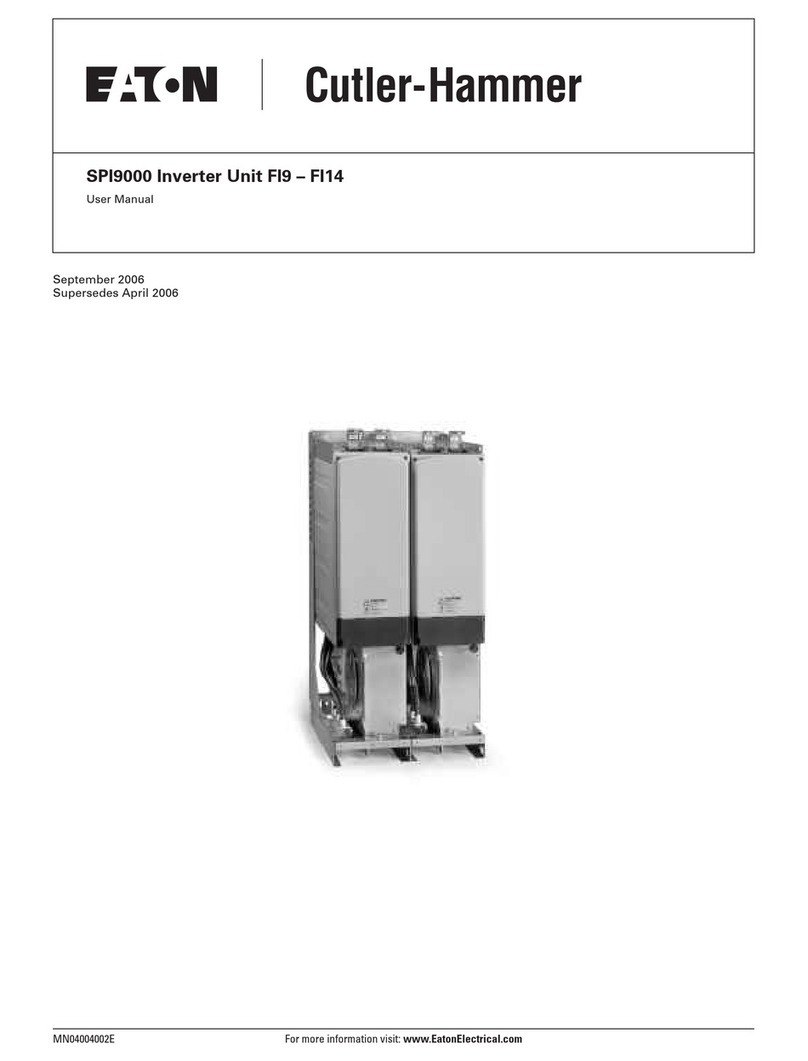
Eaton
Eaton Cutler-Hammer SPI9000 user manual
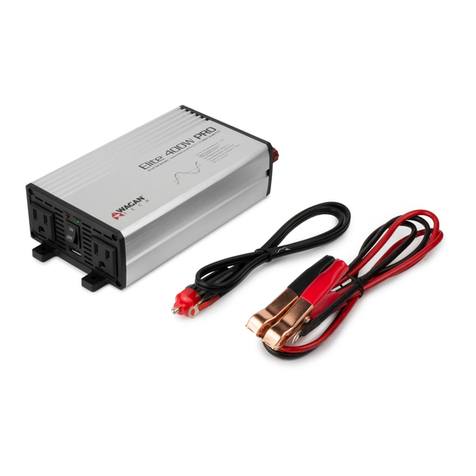
Wagan
Wagan Elite 400W PRO user manual
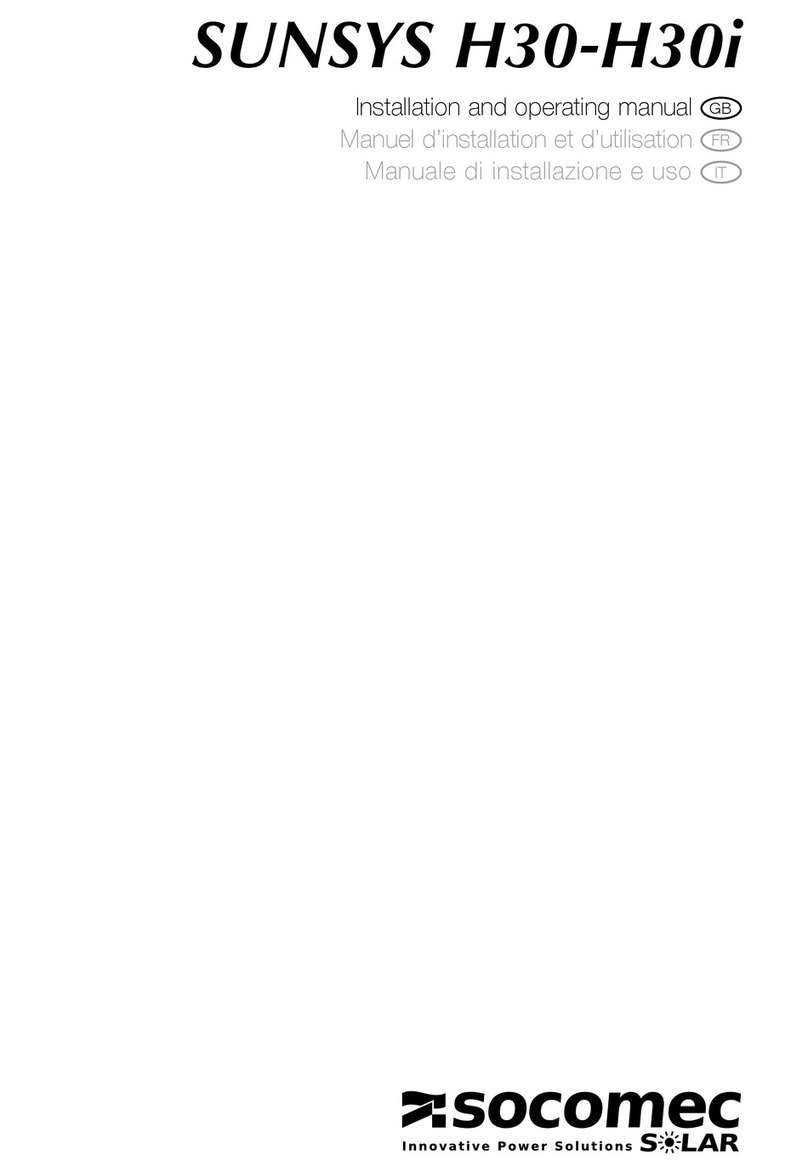
socomec
socomec SUNSYS H30 Installation and operating manual

